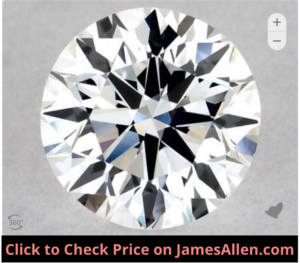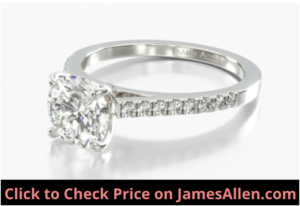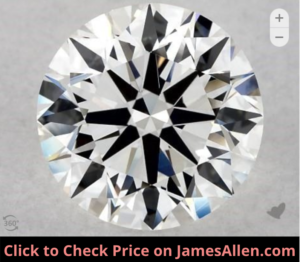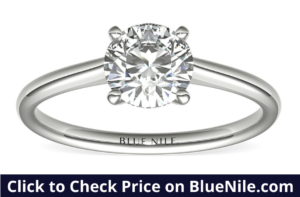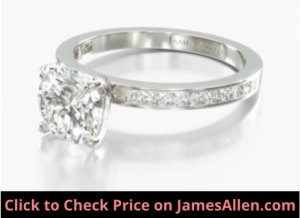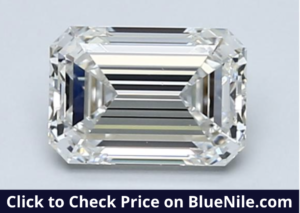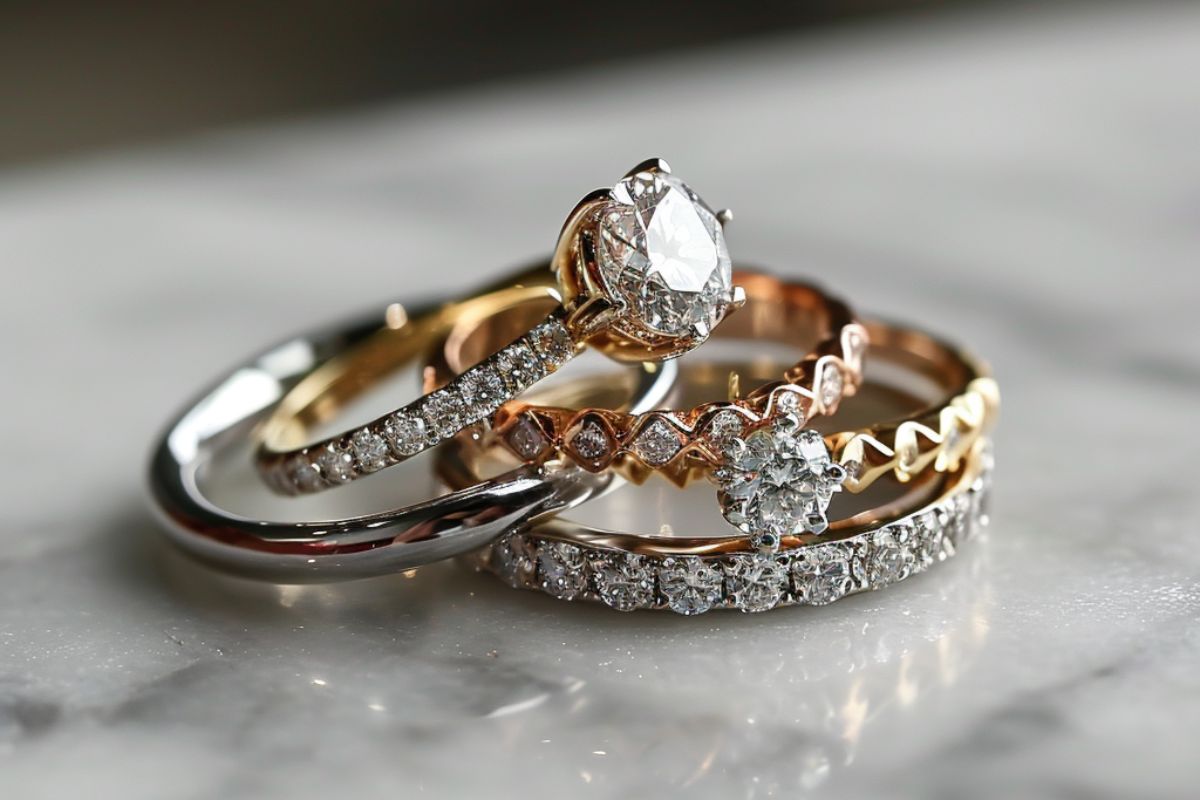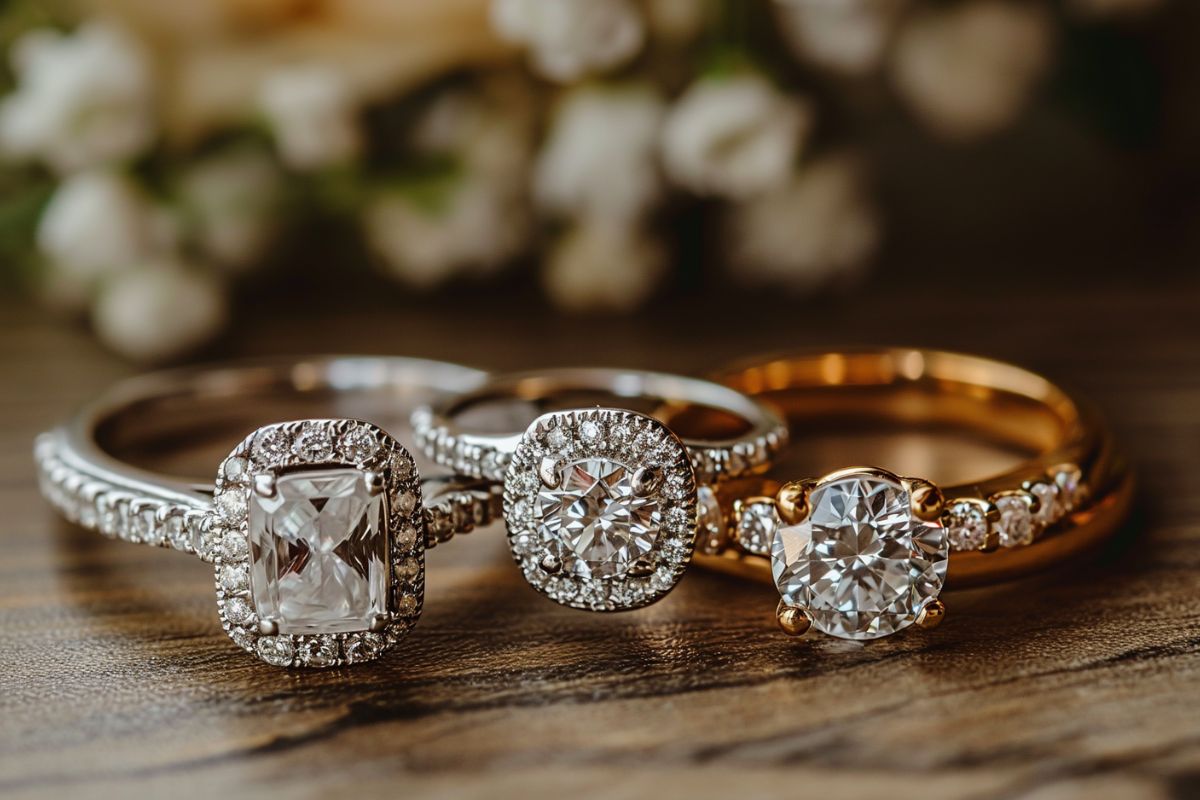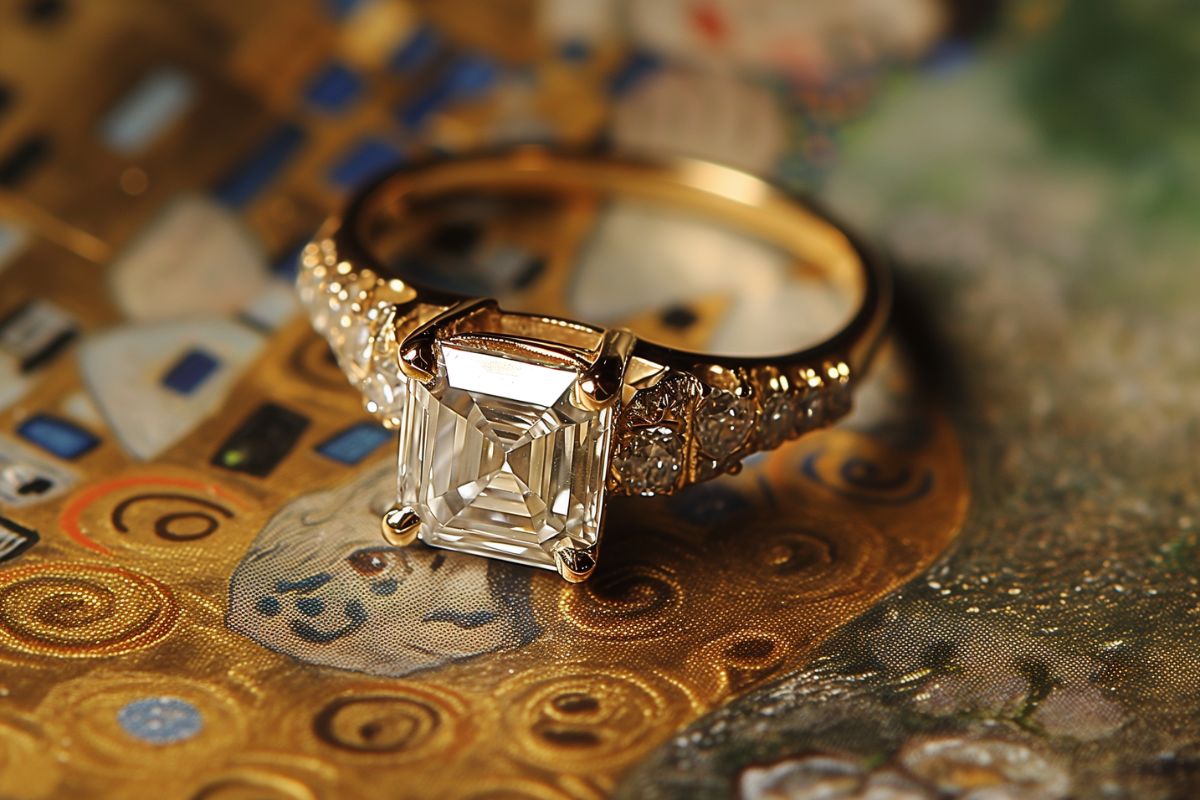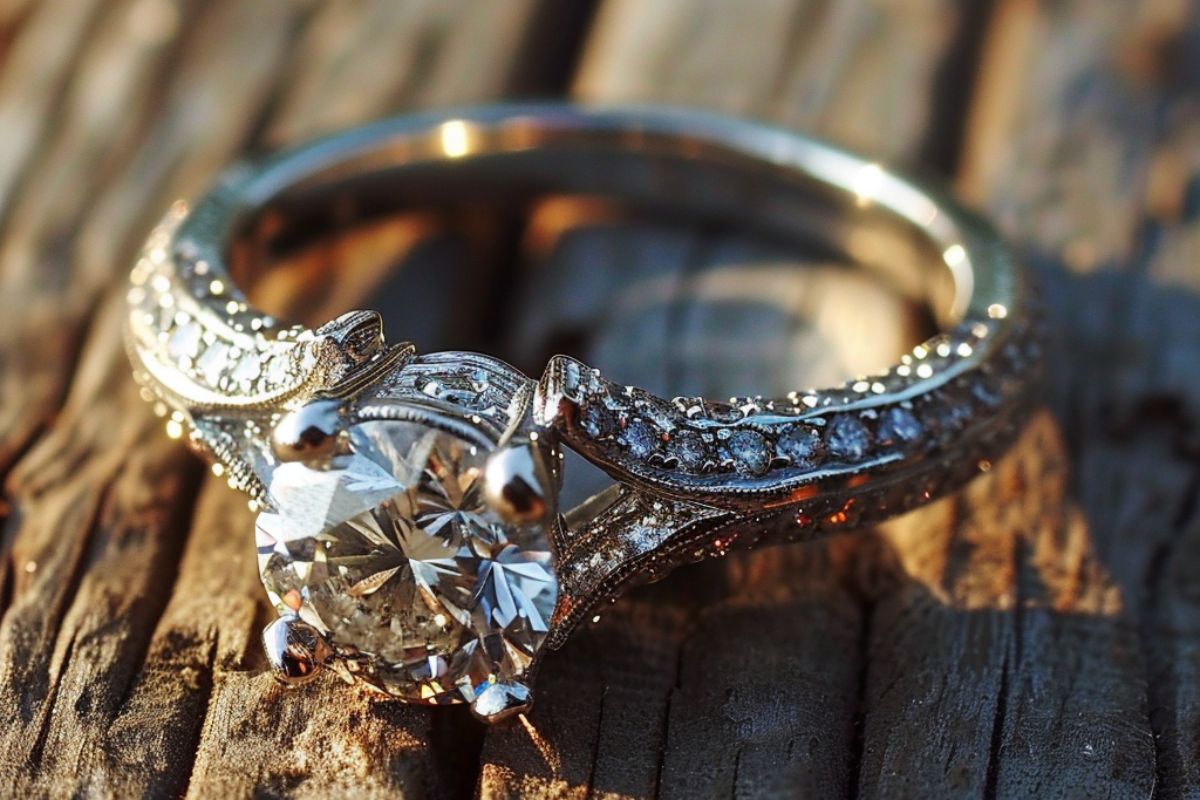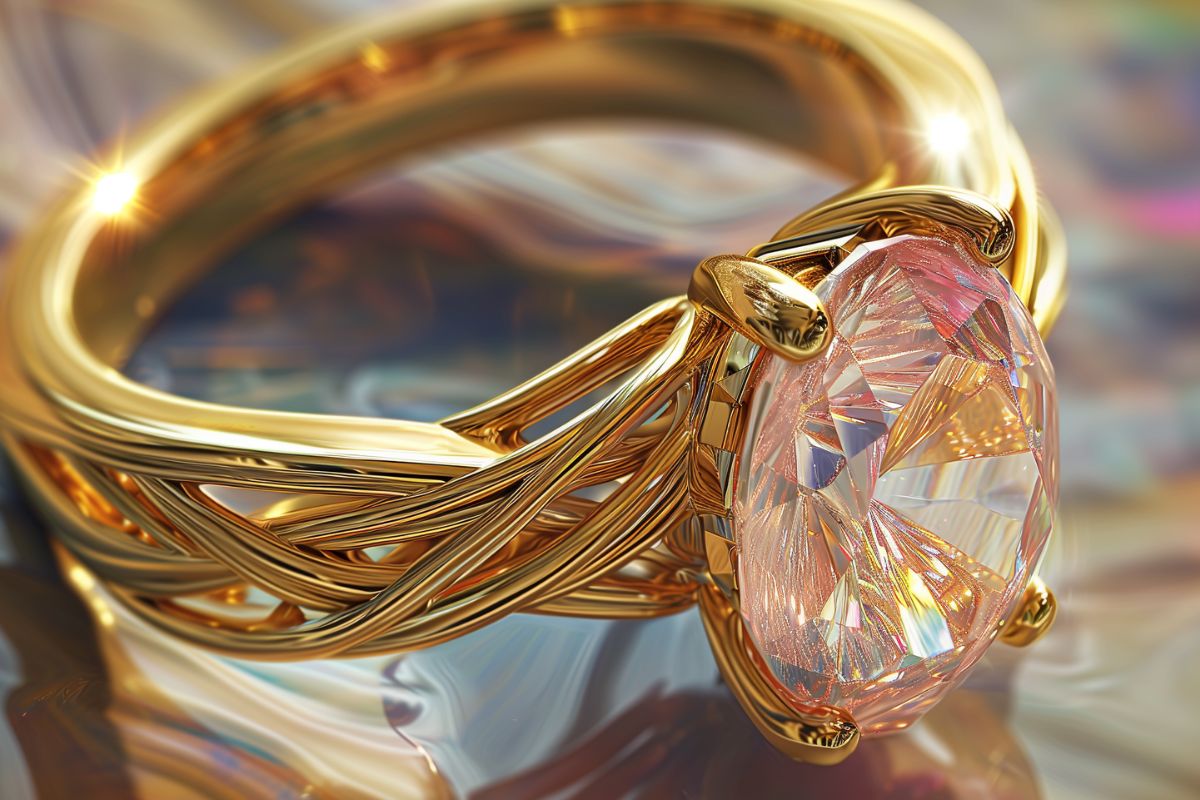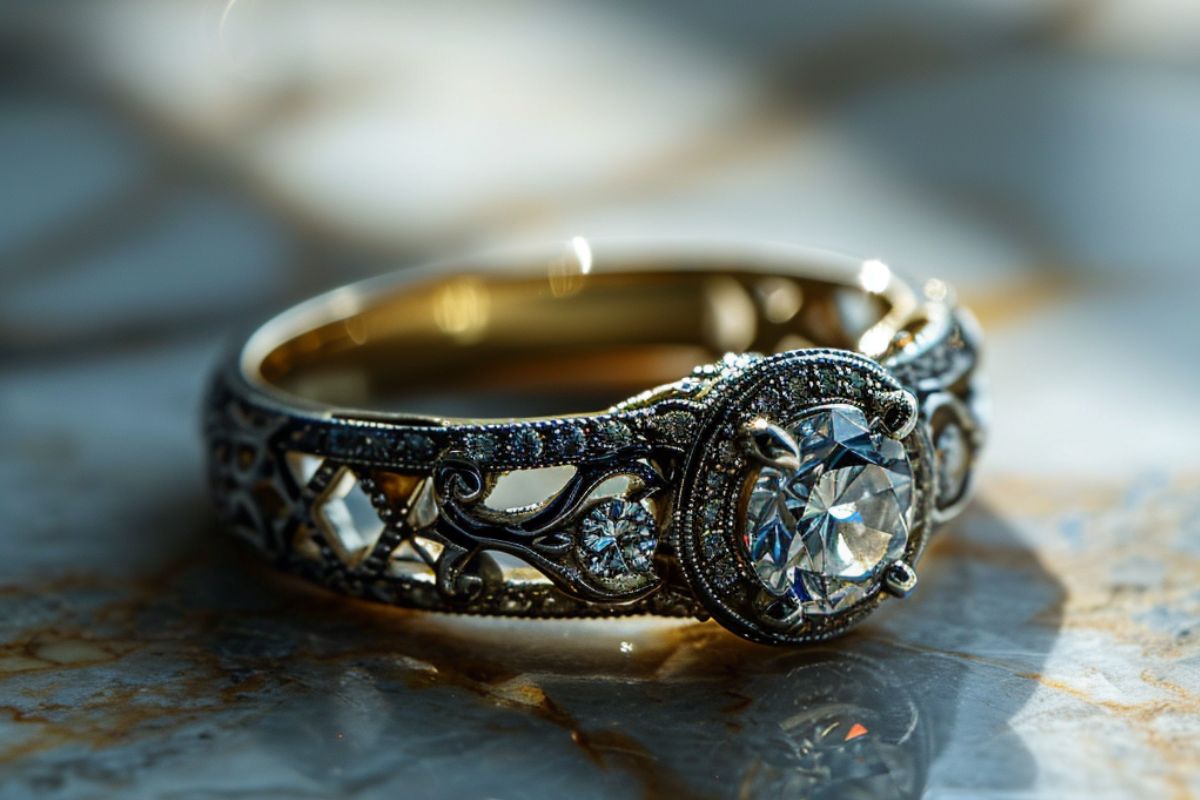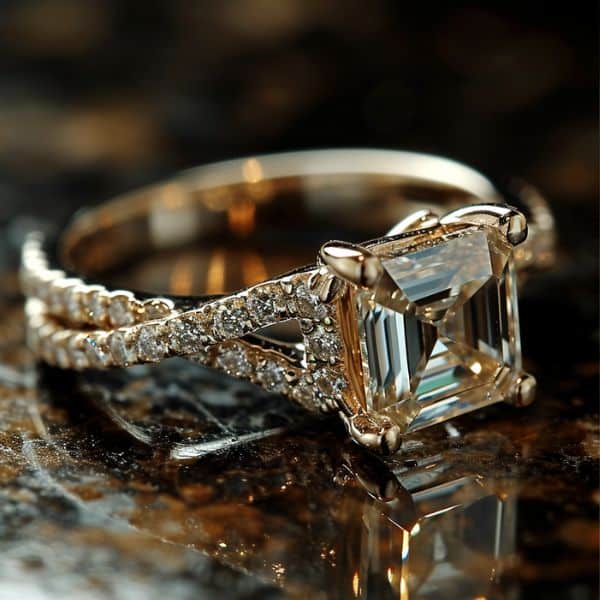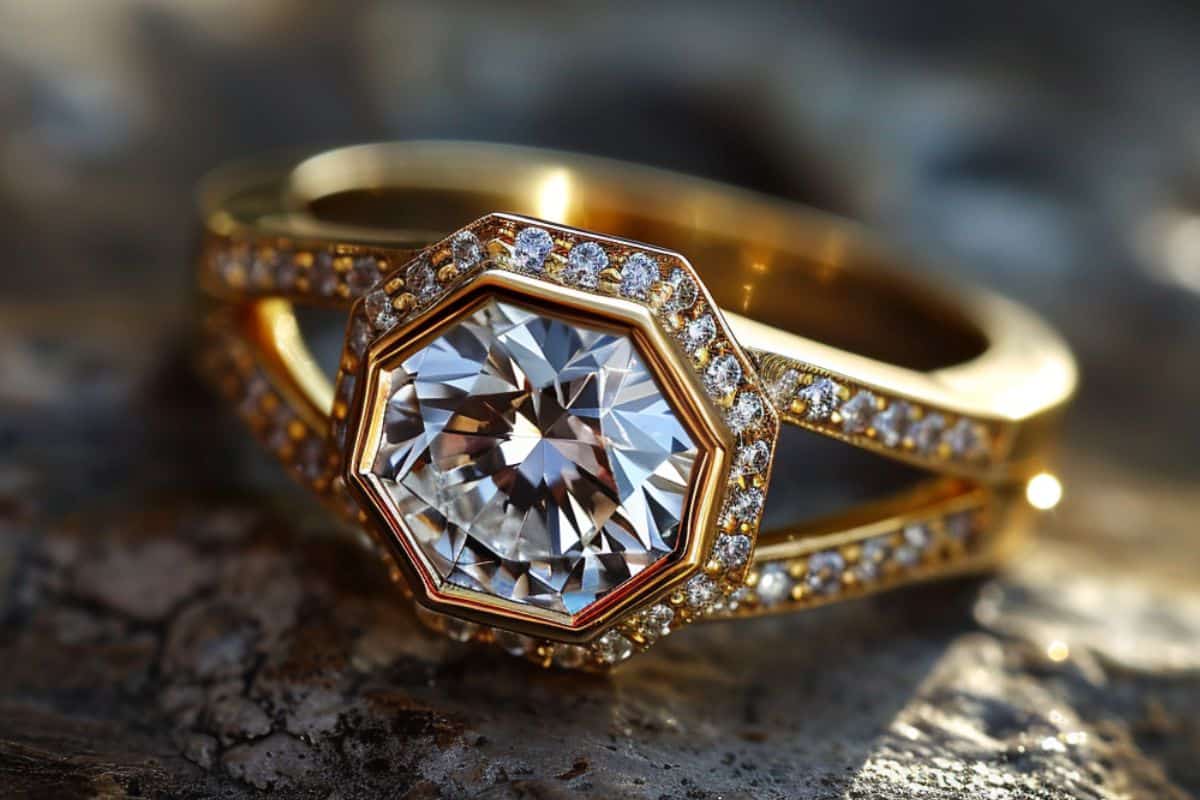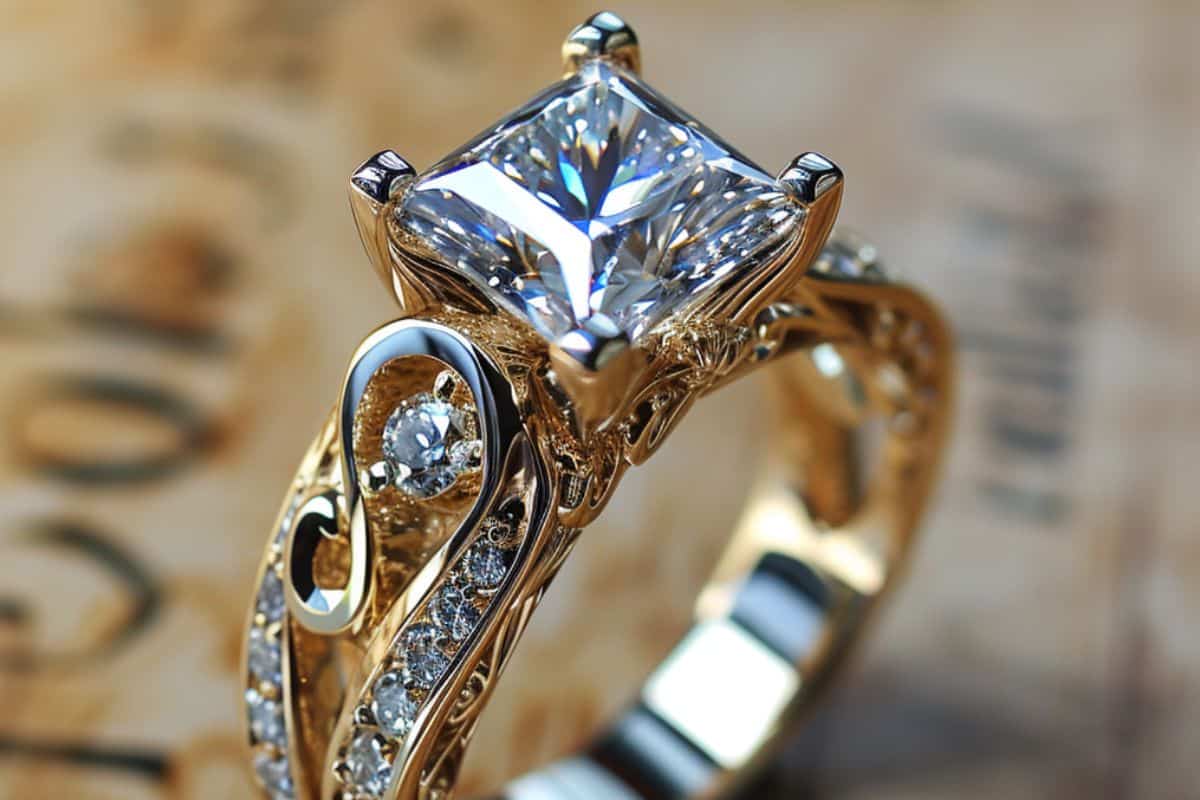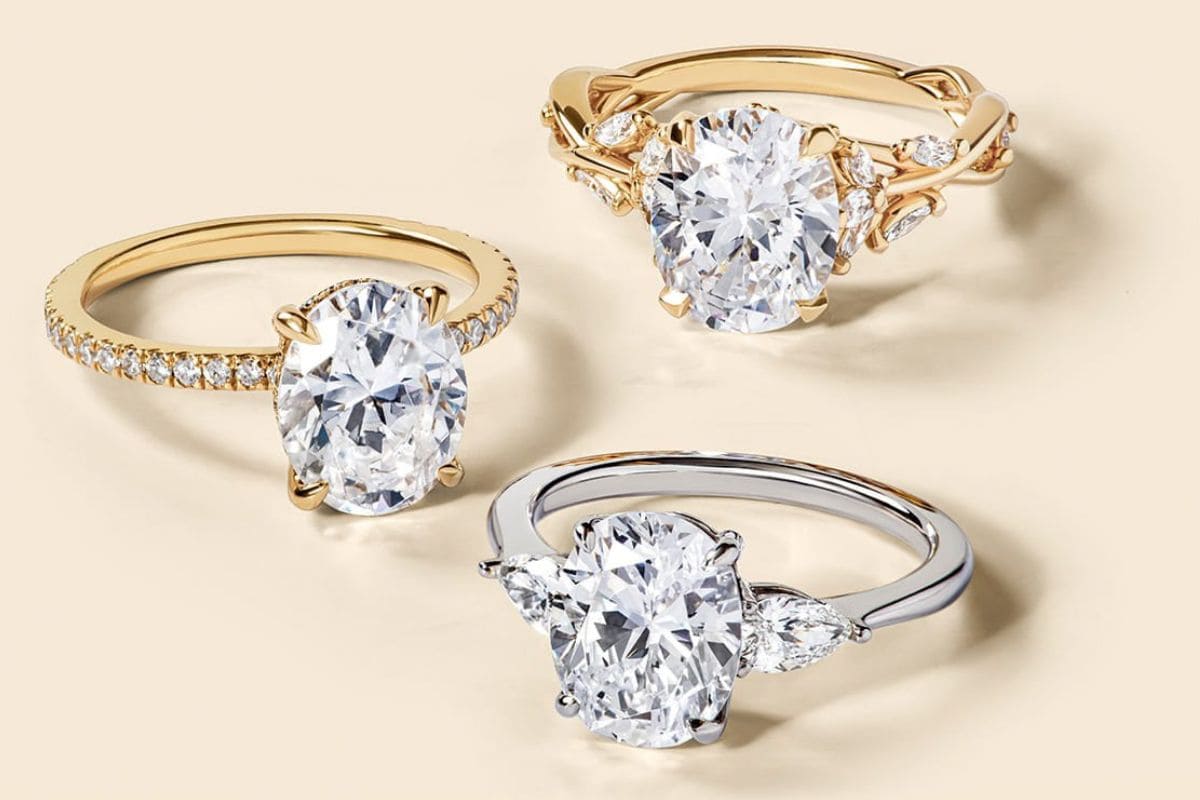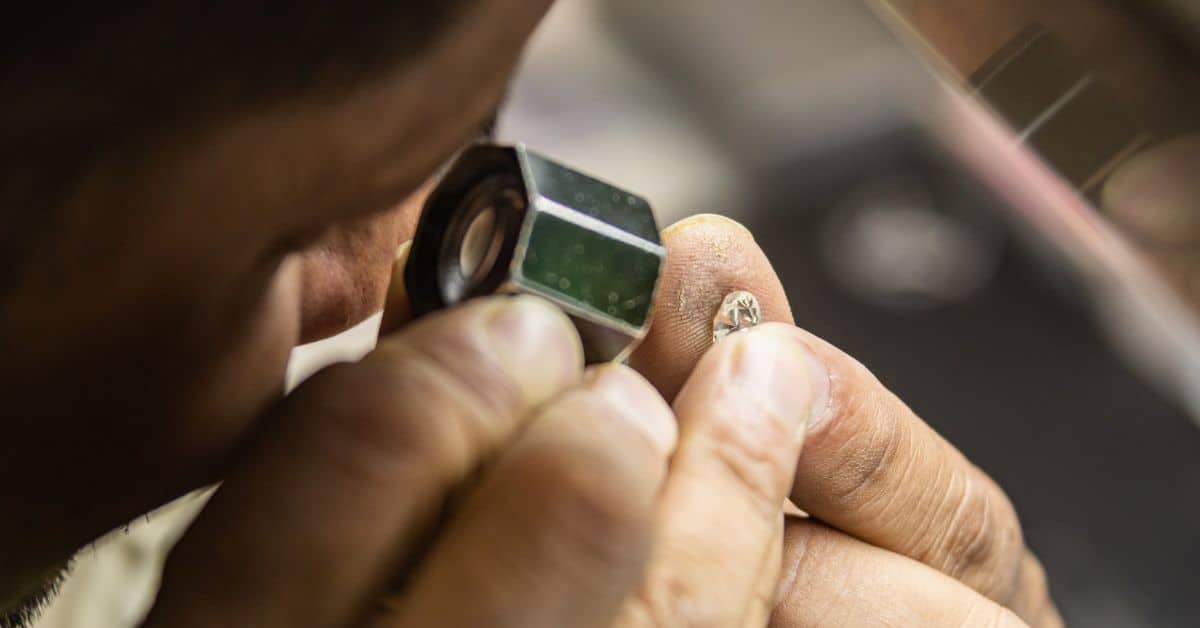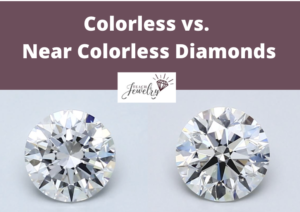
A diamond’s color grade refers to the presence of yellow or brown in its facets.
The Gemological Institute of America (GIA) developed a scale from D-Z, where diamonds that earn a D grade have no color visible at 10x magnification, and Z diamonds have strong color.
These grades are divided into categories ranging from colorless to light, with near colorless, faint, and very light in between.
The main difference between colorless and near colorless diamonds is colorless diamonds have little to no shades of yellow. Near colorless diamonds have slight tints of color that are sometimes visible to the naked eye. Jewelers charge a premium for colorless diamonds.
To help decide which is right for you, we’ll compare colorless versus near colorless diamonds, including an overview of each and their pros and cons.
What is a Colorless Diamond?
Colorless diamonds earn D, E, and F grades on the GIA color scale.
They’re the three highest grades, above the 20 other designations labeled G-Z.
The image below is of a D color diamond.
Check out the image on the vendor’s website, and rotate it all around.
No matter how you view the image, there is no visible yellow. When the gemologist examined it under 10x magnification, they also found no sign of color.
Colorless diamonds are also placed under controlled lighting conditions and compared to master stones that represent each grade.
While there’s no hint of color in D diamonds, E and F start to show slight amounts of yellow under intense scrutiny.
But the color present in E and F diamonds is generally unnoticed by the naked eye.
Take the comparison below as an example.
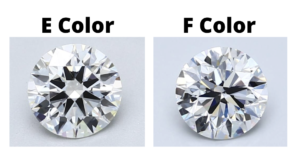
The E and F diamonds appear identical, even when you compare it to the D color diamond.
This demonstrates the minor differences between the three grades in the colorless category.
Pros
Prestige
A diamond graded D, E, or F carries a sense of prestige because of its quality. There’s an intangible reward to owning a diamond that earned some of the highest marks in certain categories.
It’s understood that clean, colorless diamonds are more valuable, and some buyers want the satisfaction of calling one their own.
Only a small percentage of diamonds are colorless because most are found with strong shades of yellow or brown. In fact, it’s estimated that less than one percent of engagement ring diamonds earn a D color grade.
Even if a colorless one is mined, many are small and used as accents on a piece of jewelry.
So the combination of a large and colorless diamond has high demand for diamond rings.
Hides Color Even in Large Diamonds
D, E, and F diamonds also have a higher chance of showing no yellow when viewed in a normal setting, regardless of its weight.
As the carat weight increases, you have to move up the color scale to ensure yellow isn’t visible.
With larger facets and a wider surface area, diamonds that would appear colorless at a carat weight of less than one might not have the same effect as you approach two carats.
But to show how colorless diamonds often solve this issue, we’ll compare two diamonds with different carat weights that earned the same grade.
This 0.75-carat diamond earned an F color grade. As you can see, there is no color visible.
This diamond weighs 2.50 carats.
Even though it weighs more than three times the other diamond, it still appears colorless.
So it provides confidence to buyers that it’s clear no matter the carat weight.
Cons
Price
The most significant disadvantage is price because they don’t offer the best value.
There’s low supply and high demand for D, E, and F diamonds, so jewelers charge a premium for these grades.
In fact, commanding higher prices for traits that aren’t distinguishable with the naked eye is one way jewelry retailers earn their margins.
To demonstrate the price of colorless diamonds compared to other categories, I assessed prices for 512 diamonds from James Allen. They all had the same grades except for color, which were:
- Carat weight: 0.90
- Clarity: VS1
- Cut: Ideal
For the 126 D color diamonds, the average price was $6,406. The range was $5,110-$6,930.
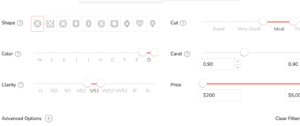
By moving down two grades to F, the average cost across 119 diamonds was $6,352. That’s a decline of less than one percent between D and F diamonds.
But when I examined prices for 148 G diamonds, which are near colorless, the average cost dropped to $6,080. That’s a five percent decline compared to D.
For the 119 J diamonds in my research, the average price was $4,081.
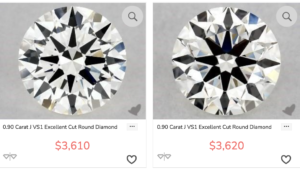
That’s 36 percent lower than a D diamond.
Because you can save on cost with each letter grade down the scale, many buyers opt against a colorless diamond and instead choose one that looks identical but earned a lower grade.
Settings can Bring out Color
Another downside of colorless diamonds is they can appear darker when set in yellow or rose gold.
Those colors reflect off the diamond, which can negate its colorless appearance.
Take this engagement ring as an example.
It features an E color diamond in a 18K yellow gold setting.
Even though you’d expect it to appear colorless, the setting may result in a slight yellow tint from the diamond. Instead, switch it to a 14K white gold setting, like the one below.
Notice how the white gold complements the colorless diamond on top.
You’ll avoid that clash and ensure the colorless diamond’s quality is on full display.
What is a Near Colorless Diamond?
Near colorless diamonds are graded G, H, I or J on the color scale.
It’s the second highest category, positioned below colorless and above faint.
The reason a diamond earns a near colorless grade is because there’s often yellow visible under ideal lighting and at 10x magnification.
But as expected, it’s more apparent in I and J diamonds than in G and H.
To provide some comparisons, here’s a G and H diamond placed side by side.
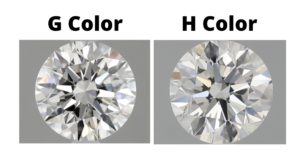
Even with high-resolution images, the color is indistinguishable.
But placing a J and G diamond next to each other tells a different story.
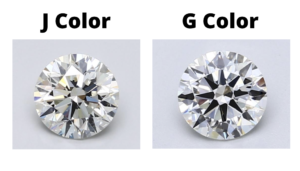
Though both are near colorless, there’s a clear difference in the amount of yellow visible in the former.
In fact, the color in the J diamond might be apparent to the naked eye.
This demonstrates how within the near colorless category, there’s a wide range of how much color is noticeable.
That emphasizes the importance of viewing the diamond in person, through high-resolution images, or ensuring the retailer has a sufficient return policy.
Pros
Value
The first pro of near colorless diamonds is they offer tremendous value when they’re identical to a colorless one.
As you learned in my price comparisons above, the cost of a diamond generally declines with every grade lower on the color scale.
So if a colorless and near colorless diamond appear the same when viewed under normal conditions, you can put that savings toward a higher carat weight, cut, or clarity grade.
In fact, a G color grade is often the most popular choice for an engagement ring diamond because of this advantage.
To illustrate, check out the piece below.
It looks flawless, and the channel setting adds even more brilliance to a ring that already shines.
Many buyers find a G color grade to be the sweet spot between a lower price without obvious yellow.
But you often don’t need to go as high as G to find a diamond that fits that criteria.
Often Colorless to Naked Eye
Many I and J diamonds appear colorless to the naked eye as well, even though you’re approaching the “faint” category.
When deciding which color grade is right for your diamond, view it in-person or through a quality image online.
Without these options, it’s difficult to know what it looks like based on the color grade.
Choice of Settings
Many near colorless diamonds are also a fitting choice for yellow or rose gold settings.
While they can interfere with the lack of color in D, E, and F diamonds, you’re less likely to experience this conflict with I and J.
In sum, your goal should be for the diamond to appear colorless no matter your choice of setting. If you need to opt for a certain metal or color grade to make that happen, it’s worth the effort.
Cons
Less Brilliance
The first downside is they may exhibit less brilliance if the yellow is apparent. While cut and clarity are more influential in a diamond’s light performance, color can also impact its sparkle.
A diamond’s brilliance is a measure of how it collects and returns white light, so any shade of yellow has the potential to diminish this quality.
But combined with an excellent cut and eye-clean clarity grade, near colorless diamonds can still have the glimmer of ones graded colorless.
Yellow More Apparent with Fancy Shapes
Another reason you might not choose a near colorless diamond is fancy shapes often show more yellow than round brilliants.
Fancy shapes are any cut other than round, such as:
- Emerald
- Princess
- Marquise
- Oval
The ones that don’t hide color as well are step-cut diamonds. Their facets are larger and arranged like steps and generally exhibit a warm glow instead of flashes of light.
For example, check out this Asscher cut with an I color grade.
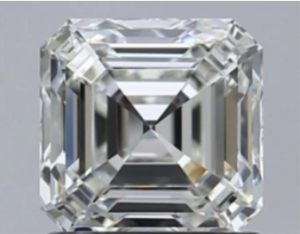
This emerald cut also earned an I.
In both cases, the yellow tints are noticeable.
So you often have to choose a higher color grade in the near colorless category if you’re opting for a fancy shape with step-cut facets.
But the increase in price is offset by a lower cost-per-carat for these cuts compared to round diamonds.
For example, on a one-carat diamond, you might save $500 by choosing a step-cut over round, but the price increase from the higher color grade might only be $300.
How to Decide Between Colorless and Near Colorless
In learning the differences between colorless versus near colorless diamonds, it’s important to grasp how these categories affect their appearance, cost, and performance.
Here are some tips to help you know decide.
Consider a colorless diamond if:
- You value owning a diamond with some of the highest color grades
- You’re willing to pay a premium
- Its setting will be white gold or platinum
A near colorless diamond might be the choice for you if:
- It still appears colorless to the naked eye
- You want to put the savings toward improved grades in other areas
- You avoid lower grades in the category for fancy shapes
Explore colorless and near colorless diamonds in person and at online jewelry retailers.
You’ll gain firsthand knowledge of what to expect with each type and can create the perfect ring for you.

Jacob Clarke
Jacob Clarke is the founder of TeachJewelry.com.
He earned an Applied Jewelry Professional Diploma from the Gemological Institute of America (GIA) and now brings you essential information about diamonds, settings, and more.
Jacob has consulted with leading jewelry brands, and his work has been cited in Clean Origin, Diamond Nexus and industry publications.
He's also a member of the International Gem Society.
He enjoys discussing jewelry with readers, so contact him with any questions at jacob.clarke@teachjewelry.com.

